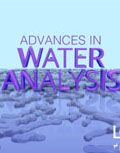When the Wrong Way is Better: Using Wrong-Way-Round Ionization for the Targeted Analysis of Pharmaceuticals in Wastewater
Spectroscopy E-Books
Effluents from wastewater treatment plants (WWTPs) are a major source of contamination by pharmaceuticals and personal care products (PPCPs) in the environment. The presence of low levels of PPCPs in surface and drinking water sources raises public concern because of the potential detrimental ecological effects of these contaminants. Because of these concerns, scientists and engineers have been interested in detecting PPCPs in water to evaluate their fate and transport in the environment, as well as monitor their transformation and degradation at WWTPs. Liquid chromatography coupled with mass spectrometry (LC–MS) has been the method of choice for separation and detection of PPCPs, because PPCPs are highly soluble in water and have low volatility. The majority of LC–MS methods use electrospray ionization either in positive or negative mode, with an acidic or basic mobile phase, respectively. As an alternative, this article presents the use of “wrong-way-round ionization” in electrospray mass spectrometry, where protonation of neutral or weakly basic molecules occurs in a strongly basic mobile phase in LC–MS. When “wrong-way-round ionization” was employed in LC–MS for the analysis of PPCPs in wastewater samples, increased signal intensities, by at least an order of magnitude, were observed in PPCPs with diverse polarity and acidic properties.
Read more
.
Best of the Week: AI and IoT for Pollution Monitoring, High Speed Laser MS
April 25th 2025Top articles published this week include a preview of our upcoming content series for National Space Day, a news story about air quality monitoring, and an announcement from Metrohm about their new Midwest office.
LIBS Illuminates the Hidden Health Risks of Indoor Welding and Soldering
April 23rd 2025A new dual-spectroscopy approach reveals real-time pollution threats in indoor workspaces. Chinese researchers have pioneered the use of laser-induced breakdown spectroscopy (LIBS) and aerosol mass spectrometry to uncover and monitor harmful heavy metal and dust emissions from soldering and welding in real-time. These complementary tools offer a fast, accurate means to evaluate air quality threats in industrial and indoor environments—where people spend most of their time.
